I usually try to avoid the Louvre on rainy days because it’s always so crowded and the experience is sometimes compromised by the sheer number of visitors.
Nonetheless, having been caught in a few downpours on previous days and fearful of catching a cold, I was determined to avoid the rain. As it turned out, going to the Louvre was an excellent idea – it’s open until 10 PM on Wednesdays. By the time I arrived, people were winding down their visits and heading out to dinner.
I started my tour in the Objet d’Arts galleries in the Richelieu wing of the Louvre. This wing exhibits porcelain, silver and furniture. It’s nowhere near the Mona Lisa, Winged Victory or any of the other popular works visitors flock to see.
There’s so much to write about all of the wonderful things I saw that I’m going to limit myself considerably. For me, the highlight of the day was a porcelain soup tureen that belonged to Marie-Antoinette. This piece was made in 1784 by the Royal Manufacturers of Sèvres. It was only recently acquired by the Louvre.
Other pieces from the same service are part of the Baron de Rothschild collection at Waddesdon Manor, located northwest of London. I’ve never been to Waddesdon Manor, but it’s definitely on my “bucket list.”
Seven dinner plates from this same service (and one supplemental plate from a later date) were sold at a Sotheby’s auction in Paris in October 2008 for nearly 50,000.00 euro. One can only imagine what it would have gone for had the bank crisis not occurred the previous month.
Unaware of all this history, I chose the same pattern years ago for my own formal china. My service is a reproduction called Louveciennes made in Limoges by Haviland. At the time I chose it, I just thought it was beautiful, feminine and quintessentially French. I’ve loved it ever since I first saw it.
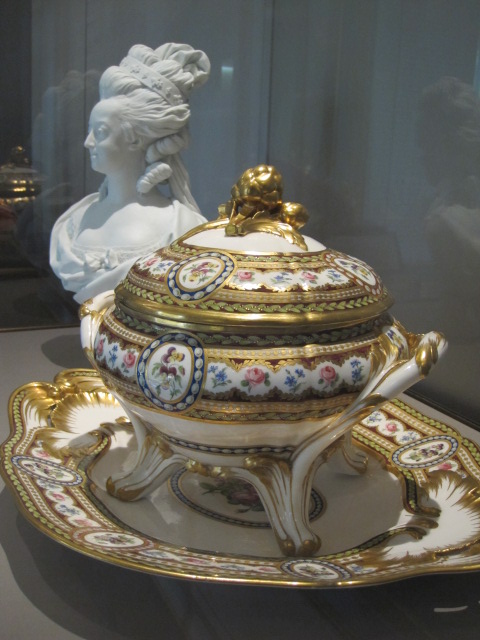
I saw several other pieces of porcelain that I found almost equally intriguing. Most of those items were made for a specific purpose, indicated by their form or motif. They included a pierced bowl and saucer for soft cheese. One can easily imagine this lovely bowl filled with a delicious serving of Epoisses cheese from Burgundy or Camembert from Normandy.
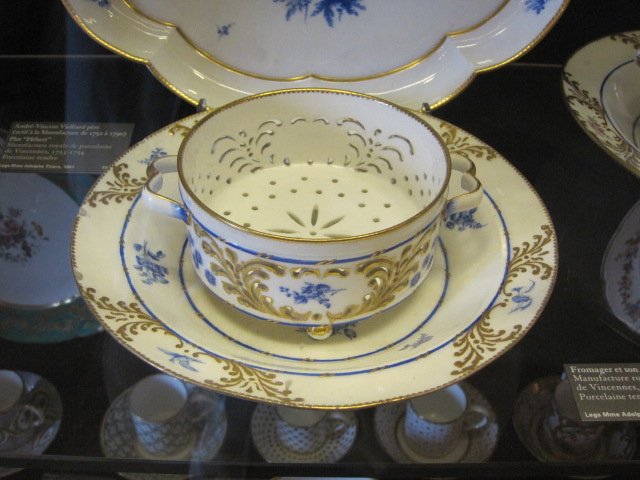
A darling little pint-sized milk pitcher and matching bowl. The panel simply says “jatte” or bowl, but I would think it was used for honey because milk pitchers like this one are still used for breakfast and the motif on the front of the bowl depicts a beehive with lots of bees flying around it and a flower garden. Honey is often served at breakfast.
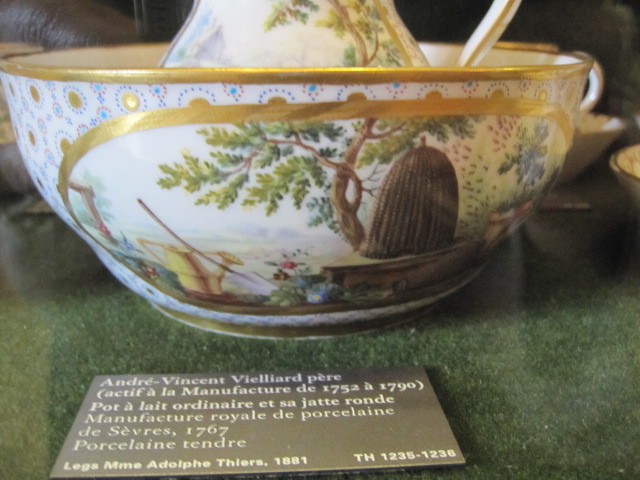
Individual glass coolers. These two are a quite small. They were used to cool a single wine glass. The glass would have been placed upside in the cooler and immersed in icy water. I love bird motifs and I love blue and white porcelain, these were stunning.
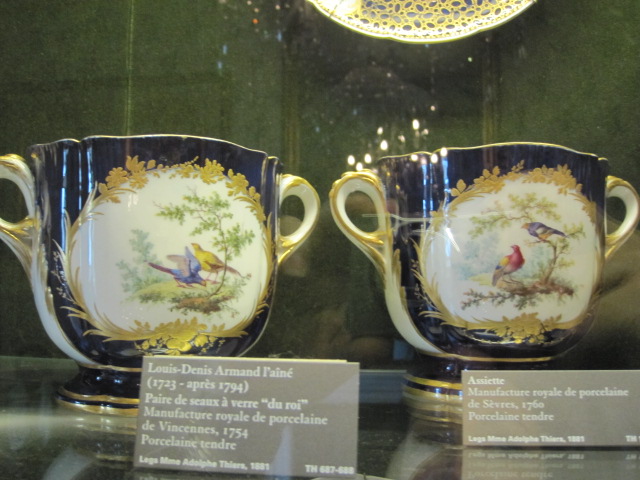
The Louvre would have been a sight to see if it had been empty. The rooms exhibiting all of these objet d’art were decorated during the same period. Looking at the ceilings, one can easily see the similarity, as the same decorative motifs were used for both the porcelain and interior design. The garlands of flowers, arabesques and color palettes are virtually the same.

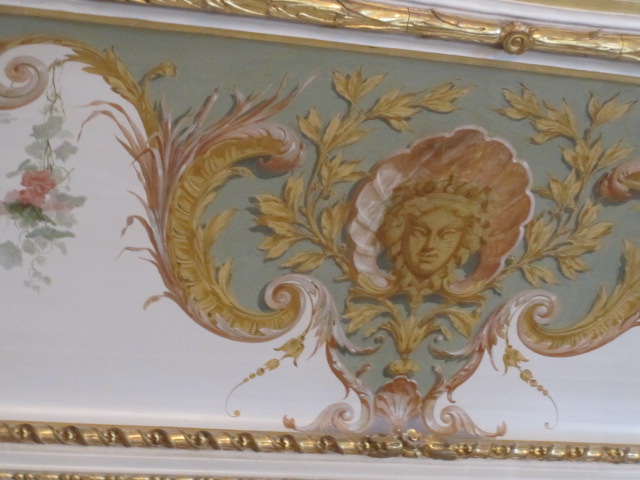
Can you imagine being served a painstakingly prepared meal on this artfully created porcelain in one of these magnificent rooms? What an experience that would be!



Leave a Reply